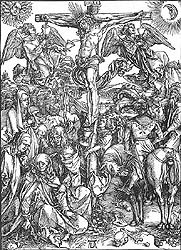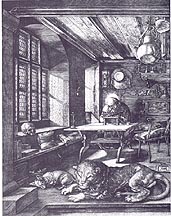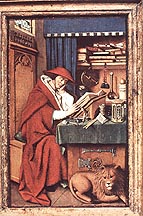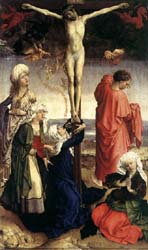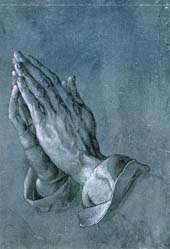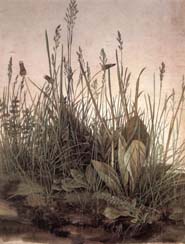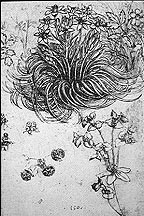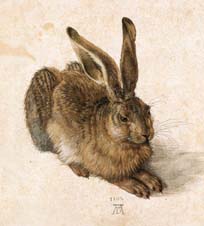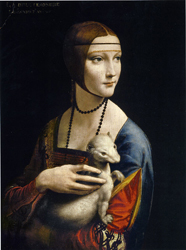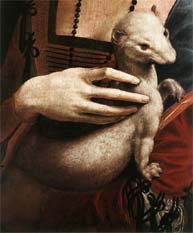Crucifixion from the Large Passion, 1497-1500, woodcut.
St. Jerome in his Study, 1514, engraving (300 dpi image).
Erasmus's eulogy on Dürer: I admit that Apelles was a prince of painting and that his rival artists could find no fault with him except that he did not know when to stop, a criticism which is a sort of compliment in itself. But Apelles used colour. His colours were admittedly restricted in number and the reverse of flamboyant, but they were colours none the less. Dürer, however, apart from all his all-round excellence as a painter, could express absolutely anything in monochrome, that is with black lines only --shadows, light, reflections, emerging and receding forms, and even the different aspects of a single thing as they strike the eye of the spectator. His harmony and proportions are always correct. Above all, he can draw the things that are impossible to draw: fire, beams of light, thunderbolts, flashes and sheets of lightning, and the so-called clouds on the wall, feelings, attitudes, the mind revealed by the carriage of the body, almost the voice itself. All this he can do just with lines in the right place, and those lines all black! And so alive is it to the eye that if you were to add colour you would spoil the effect. It is surely much cleverer to be able to dispense with the meretricious aid of colour that Apelles required and still achieve the same results as he did.
Four Horsemen, from Apocalypse series. 1496-1498, woodcut (300 dpi image).
For a site that shows the complete Apocalypse cycle. See also the Connecticut College page dedicated to the work of Dürer.
